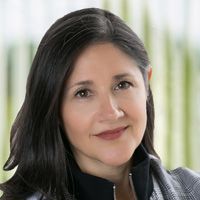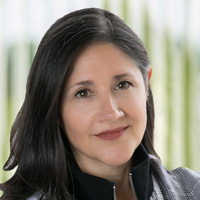5 Charitable Surprises about High-Net-Worth Families
They might be out of the spotlight, but smaller family foundations are stepping up their giving in this time of need.


Family philanthropy is a key driver of social change and a great way for high-net-worth (HNW) families to clarify their values, commit to a mission and work collaboratively across generations to build and protect their legacies.
We recently analyzed the grantmaking activities of more than 1,000 private foundations over the past 24 months to understand how and where wealthy families are focusing their giving. Our findings provide a benchmark for affluent philanthropists and the advisers who support them.
Here are our top five discoveries about HNW donors:
From just $107.88 $24.99 for Kiplinger Personal Finance
Become a smarter, better informed investor. Subscribe from just $107.88 $24.99, plus get up to 4 Special Issues

Sign up for Kiplinger’s Free Newsletters
Profit and prosper with the best of expert advice on investing, taxes, retirement, personal finance and more - straight to your e-mail.
Profit and prosper with the best of expert advice - straight to your e-mail.
They don’t just give the minimum
If you think affluent families only use their foundations to park assets and get tax benefits, think again. While foundations are required to give away 5% of their assets every year, those in our research sample gave away an average of 7.4% – a trend that has been constant in the 12 years we’ve conducted this analysis. Even more impressive, the smaller foundations, or those with less than $1 million in assets, were the biggest heroes in 2020: They gave an average of 15% of their assets.
They’re increasingly generous
The foundations we studied collectively funded approximately 1,000 more grants and dispersed $15 million more in 2020 than in 2019, an average of $339,032 per foundation. They also doubled their grants to individuals (GTIs), a giving capability unique to private foundations that enables donors to issue emergency funding directly to people in need instead of granting to a public charity.
They will answer the call
Judging from their actions in 2020, foundation donors will move swiftly to help in times of urgent need. After the United States declared a national emergency in March 2020 due to COVID-19, foundations nearly doubled their year-over-year grant volume in April from 5.6% to 9.7% of total activity. They also increased their giving to human services and public/societal benefits charities, which experienced the highest year-over-year increases of all the charitable sectors tracked.
Additionally, the dollars that donors granted to charity exceeded the funds they invested in their foundations for only the second time in 20 years (the first being in 2019), demonstrating a pronounced commitment to philanthropy during a time of heightened need.
They're loosening the reins on how their dollars are spent
Typically, philanthropists carefully define how they want their foundation dollars to be used by issuing “specific-purpose” grants. However, as they endeavored to meet the onslaught of urgent need in 2020, they eased their restrictions and gave more “general purpose” grants to afford charities maximum flexibility in how to use the funding. At 46% of all grants in 2020, it’s the most balanced split we’ve seen since 2010 when general purpose grants represented just 32% of giving.
Their resources are growing
Foundation endowments experienced double-digit growth in both 2020 and 2019, helping to fund the 2020 increase in grants and set the stage for future giving. Part of the growth was fueled by investment returns (roughly 55% of endowment assets are allocated to equities) and part was a factor of new contributions from funders who replenished an average of 57 cents for every 83 cents they disbursed in grants and expenses – a sure sign of ongoing charitable intent.
Despite the headlines that are given to megadonors, such as the Gates Foundation and the Ford Foundation, 98% of the roughly 100,000 private foundations in the U.S. have endowments of less than $50 million and 63% have less than $1 million. Great work is being fueled by people out of the spotlight who are quietly and persistently pursuing their philanthropic missions and effecting change.
To view our full study on HNW giving, visit here.
Profit and prosper with the best of Kiplinger's advice on investing, taxes, retirement, personal finance and much more. Delivered daily. Enter your email in the box and click Sign Me Up.

Hannah Shaw Grove is the chief marketing officer of Foundation Source, founder of "Private Wealth" magazine and author of 11 data-based books and hundreds of reports and articles on topics relating to the creation, management, disposition and transfer of wealth. Hannah has previously been the chief marketing officer at Apex Clearing, iCapital Network and Merrill Lynch Investment Managers and is a cum laude graduate of Harvard University. She holds the FINRA Series 6, 7, 24, 26 and 63 licenses.
-
 Holiday Tax Scams: 'Tis the Season to be Wary
Holiday Tax Scams: 'Tis the Season to be WaryTax Scams Navigating tax tricks of the holiday season may be daunting, but don't let that destroy your festive spirit
-
 Metro by T-Mobile Is Giving Away This Samsung Galaxy A16: Which Plans Are Eligible?
Metro by T-Mobile Is Giving Away This Samsung Galaxy A16: Which Plans Are Eligible?Metro by T-Mobile is offering free Samsung Galaxy A16 phones on eligible plans right now. Here’s how the deal works.
-
 I Drive and Collect Classic Cars: Here’s How I Got Started
I Drive and Collect Classic Cars: Here’s How I Got StartedAre classic cars a hobby or an investment strategy — or both? Either way, the vintage car scene is much cooler and more affordable than you think.
-
 The $183,000 RMD Shock: Why Roth Conversions in Your 70s Can Be Risky
The $183,000 RMD Shock: Why Roth Conversions in Your 70s Can Be RiskyConverting retirement funds to a Roth is a smart strategy for many, but the older you are, the less time you have to recover the tax bite from the conversion.
-
 A Financial Pro Breaks Retirement Planning Into 5 Manageable Pieces
A Financial Pro Breaks Retirement Planning Into 5 Manageable PiecesThis retirement plan focuses on five key areas — income generation, tax management, asset withdrawals, planning for big expenses and health care, and legacy.
-
 4 Financial To-Dos to Finish 2025 Strong and Start 2026 on Solid Ground
4 Financial To-Dos to Finish 2025 Strong and Start 2026 on Solid GroundDon't overlook these important year-end check-ins. Missed opportunities and avoidable mistakes could end up costing you if you're not paying attention.
-
 Are You Putting Yourself Last? The Cost Could Be Your Retirement Security
Are You Putting Yourself Last? The Cost Could Be Your Retirement SecurityIf you're part of the sandwich generation, it's critical that you don't let the needs of your aging parents come at the expense of your future.
-
 I'm an Insurance Pro: It's Time to Prepare for Natural Disasters Like They Could Happen to You
I'm an Insurance Pro: It's Time to Prepare for Natural Disasters Like They Could Happen to YouYou can no longer have the mindset that "that won't happen here." Because it absolutely could. As we head into 2026, consider making a disaster plan.
-
 The Future of Philanthropy Is Female: How Women Will Lead a New Era in Charitable Giving
The Future of Philanthropy Is Female: How Women Will Lead a New Era in Charitable GivingWomen will soon be in charge of trillions in charitable capital, through divorce, inheritance and their own investments. Here's how to use your share for good.
-
 5 Smart Things to Do With Your Year-End Bonus, From a Financial Professional
5 Smart Things to Do With Your Year-End Bonus, From a Financial ProfessionalAfter you indulge your urge to splurge on a treat, consider doing adult things with the extra cash, like paying down debt, but also setting up a "fun fund."
-
 Are You a Gen X Investor? Here's How You Can Protect Your Portfolio From an AI Bubble
Are You a Gen X Investor? Here's How You Can Protect Your Portfolio From an AI BubbleAmid talk of an AI bubble, what's the best course of action for investors in their 50s and 60s, whose retirement savings are at risk from major market declines?